Stages of an Eclipse
The total solar eclipse is one of the most captivating and spectacular events in nature and should be experienced with utmost safety precautions in mind..
Look Up!
Hey, skywatchers! Get ready for an exciting cosmic event coming your way – a total solar eclipse!
On April 8, 2024, a spectacular show will cross North America, passing through Mexico, the United States, and Canada.
This extraordinary phenomenon happens when the Moon comes between the Sun and the Earth, creating an awe-inspiring sight as it completely blocks the Sun's face.
During this fantastic event, the sky will darken, resembling a beautiful dawn or dusk.
Let's embark on a journey to discover the stages of this jaw-dropping celestial spectacle!
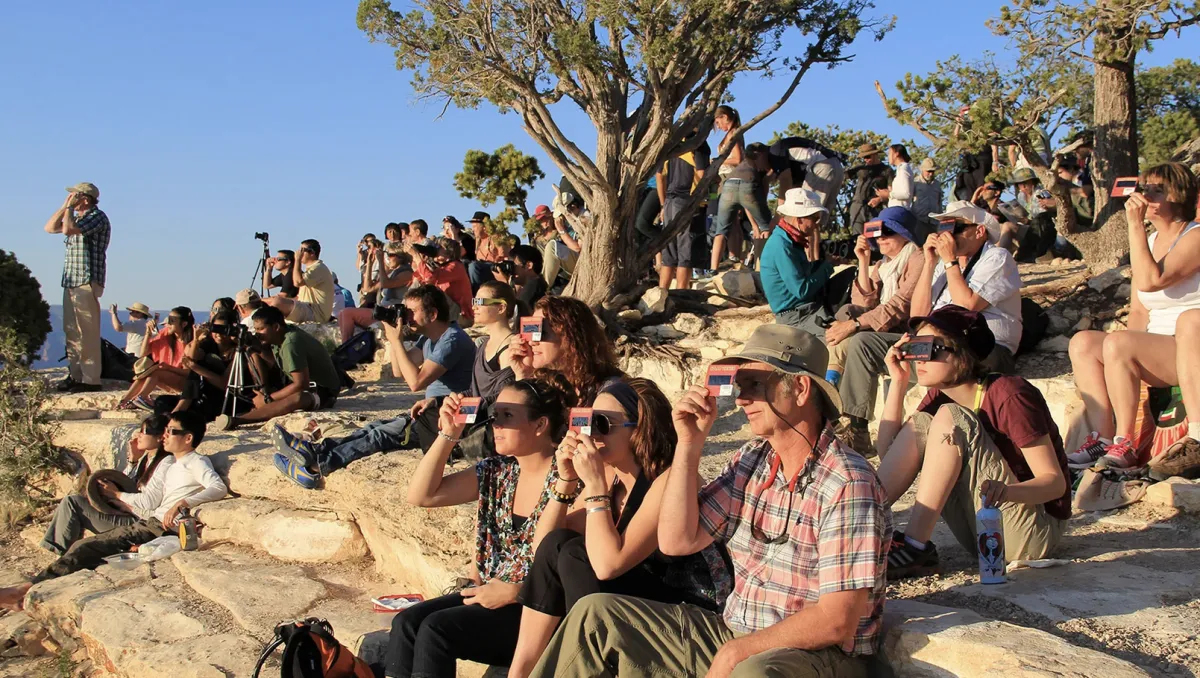
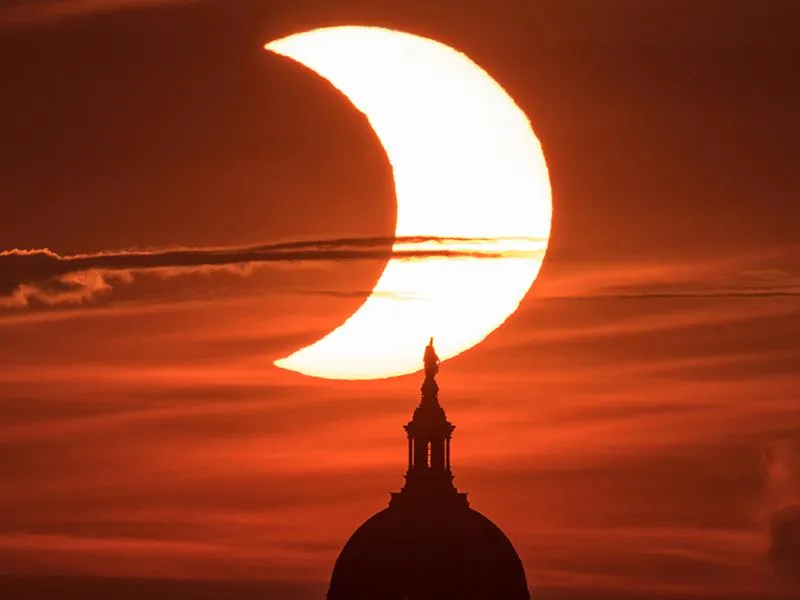
A partial solar eclipse viewed from the United States Capitol Building on June 10, 2021, as seen from Arlington, Virginia. Credits: NASA/Bill Ingalls
Partial Eclipse
As the Moon starts its journey across the Sun, it doesn't cover it completely at first.
Instead, the Sun appears to have a crescent shape. This stage is called the partial eclipse.
The partial eclipse phase can last for about 70 to 80 minutes in most places.
Remember, during this phase, it's crucial to protect your eyes with special eclipse glasses to safely view the Sun's beauty.
Baily's Beads
As the Moon continues its path across the Sun, you might notice several points of light shining around the Moon's edges.
These are called Baily's Beads. They occur because sunlight streams through the valleys along the Moon's
horizon.
However, they are short-lived and might not be visible to everyone watching the eclipse.
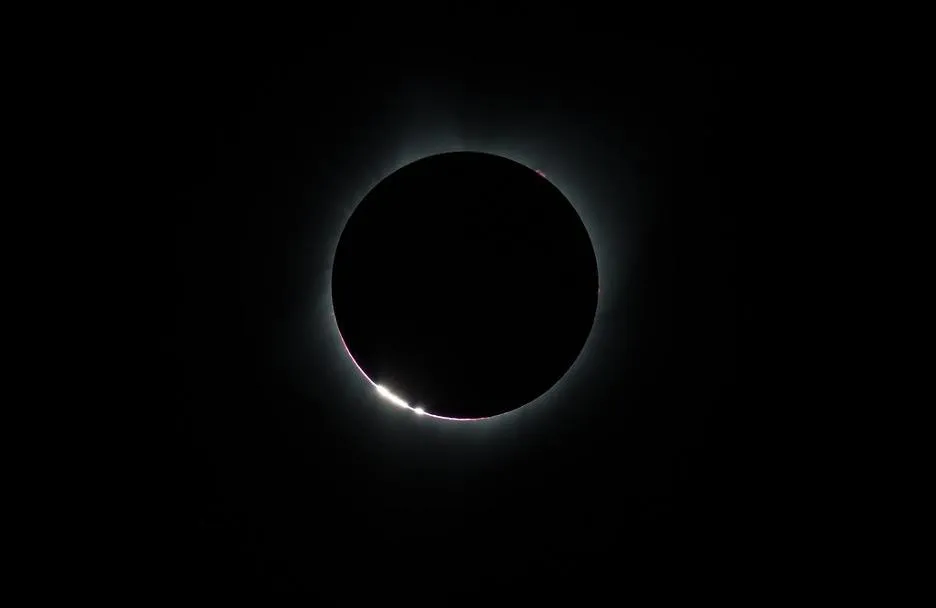
Baily's Beads appear as the Moon makes its final move over the Sun during the total solar eclipse on Monday, Aug. 21, 2017 above Madras, Oregon. Credits: NASA/Aubrey Gemignani
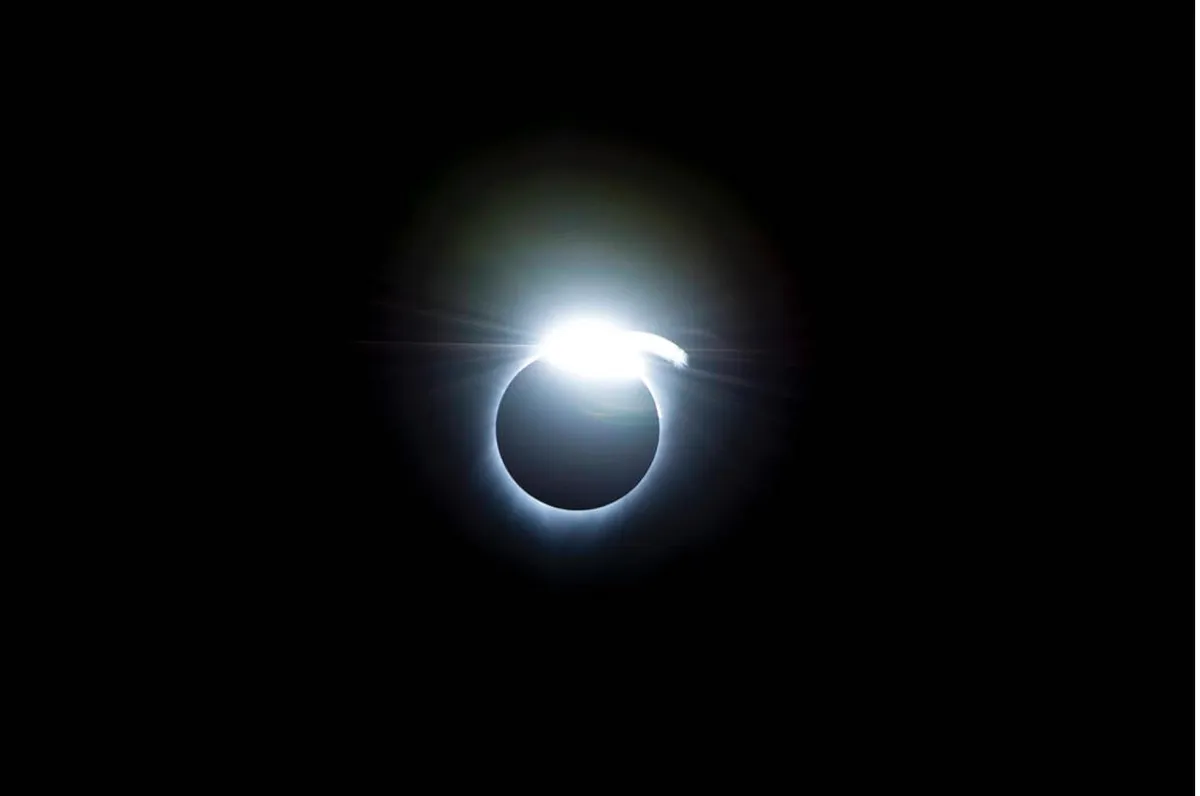
The diamond ring effect occurred at the beginning and end of totality during a total solar eclipse on Aug. 21, 2017. Credits: NASA/Carla Thomas
Diamond Ring
During the progression of the eclipse, Baily's Beads will start to disappear until only a single bright spot remains along the edge of the Moon's shadow.
This bright spot resembles a diamond in a giant diamond ring, formed by the rest of the Sun's atmosphere. It's an exciting moment as totality – the total eclipse phase – is almost here, but remember to keep your eclipse glasses on!
Totality
As the diamond ring disappears, and all direct sunlight vanishes, you've reached the magical moment of totality.
It's safe to remove your eclipse glasses now and witness the total eclipse with your naked eyes.
During this phase, you might see the chromosphere, a pink circle around the Moon, and the corona, the outer solar atmosphere, appearing as white streams of light.
Enjoy this breathtaking experience, but remember to put your eclipse glasses back on before totality ends.
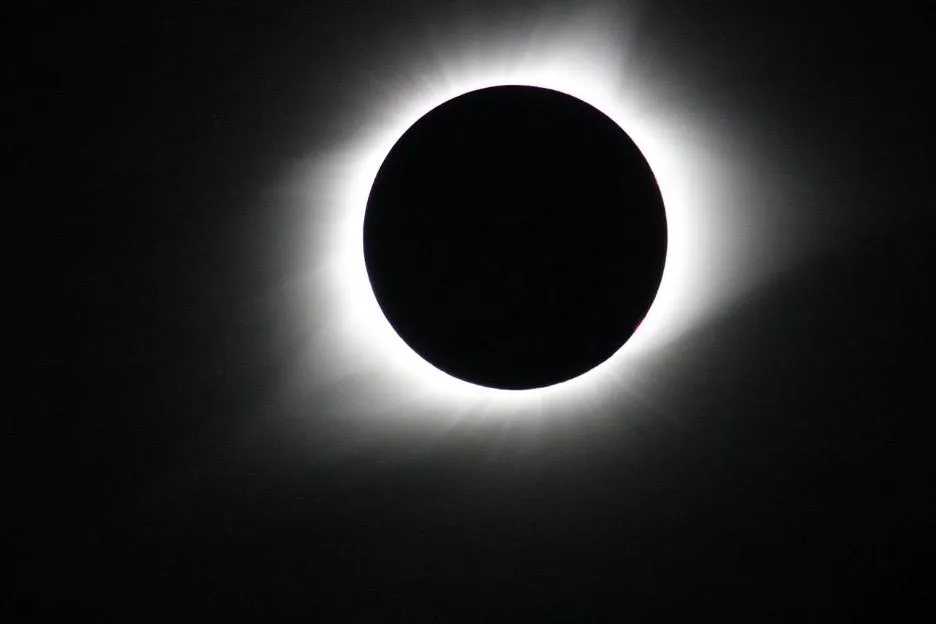
This image of the Aug. 21, 2017, total solar eclipse was taken from Madras, Oregon. Credits: NASA/Nat Gopalswamy
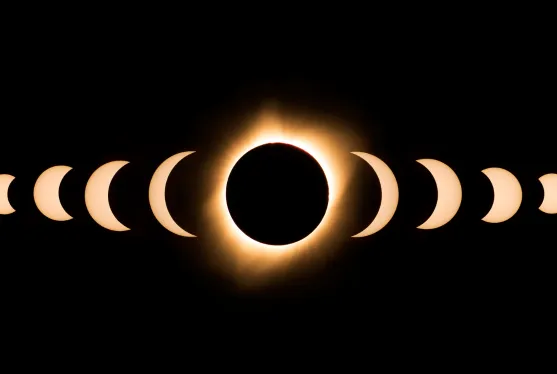
Brightening Reappears
After the exhilarating moments of totality, the Moon continues its journey, and you'll start to see brightening on the opposite side of where the diamond ring shone.
This indicates that the Sun's lower atmosphere is peeking out from behind the Moon.
It's time to protect your eyes again and put your eclipse glasses back on before the first flash of sunlight appears around the Moon's edges.
Grand Finale!
As the Moon moves away completely from the Sun, you'll witness the final stages of the eclipse, mirroring the beginning.
You'll see the diamond ring, Baily's Beads, and shadow bands once more. This moment is known as fourth contact, and it's when the entire Sun is visible again.
The eclipse adventure may be over, but the memories will last a lifetime!


Reserve Your Spot Today.
Experience a once in a generation celestial event on our ranch in Texas. Don't miss out on a camping adventure like no other. Hurry, limited spaces available! Reserve your spot now and create memories that will last forever.

© 2023 LS Marketing
Lampasas, TX USA
All Rights Reserved,
leticiastaley@ymail.com
(830) 208-4508